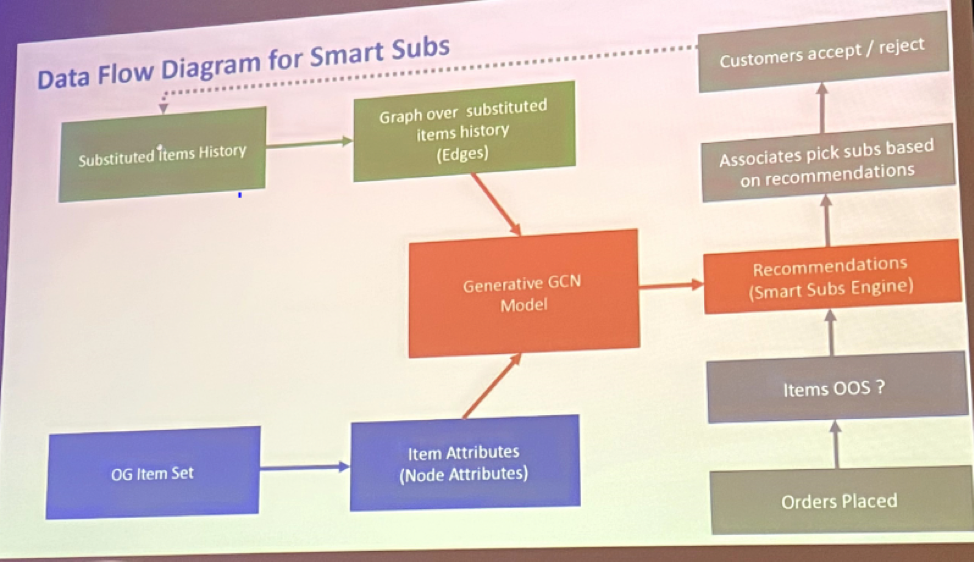RE-WORK Deep Learning Summit 2020: Day 1
Last week, I attended the Re-work Deep Learning Summit in San Francisco. The speakers were a plethora of the top AI researchers and practitioners in the world - Facebook AI Research (FAIR), Google Brain, Netflix, Uber, MIT, UC-Berkeley, Amazon, and Pandora, just to name a few. The topics ranged from academic topics like pruning neural networks to putting AI into practice in retail. As with most conferences, there seemed to be an overarching theme in the sessions I attended. At this conference, the theme was “you have to use multiple AI methods to solve your problem.” Consumers are relying on AI more each day and they expect the AI to evolve. For the evolution to occur, new techniques must be invented. In addition, techniques must be combined.
On Day 1, I saw a talk by Walmart AI Labs entitled “Personalizing the Online Grocery Substitution Experience.” My family uses Walmart online grocery ordering and pickup. At times, items are out-of-stock and we get substituted items. Sometimes we wonder why in the world we got some of the substitutions because they seem unrelated to what we ordered. Other times we get items that are significantly greater than what we ordered. For example, we may order a 50-count bottle of Advil. It is out-of-stock, so they substitute it with a 250-count bottle of Advil for the same price. Seems strange, but we definitely don’t complain. This talk fascinated me because they discussed how they determine what to substitute.
As you can see from the pictures below, determining what to substitute is not a trivial problem. Walmart combines multiple AI and mathematical techniques to solve it, including constraint-based optimizations (CBO) and graph convolutional networks (GCN). These two techniques are important because they address two different problems that must be solved. The GCN is used to determine which item to substitute and the probability for acceptance of the substitution. However, that must also be combined with a cost analysis, which is where CBO comes into play. A substitution that is typically accepted may cost Walmart a significant amount of money, while substitutions that are declined make no money for Walmart. A balance has to be found that makes the customer happy and produces profit for Walmart.
I’m looking forward to analyzing our substitutions on our grocery order this weekend to see if I can figure out the reasoning. Just another example of AI making life easier for consumers while still providing profits for sellers.


